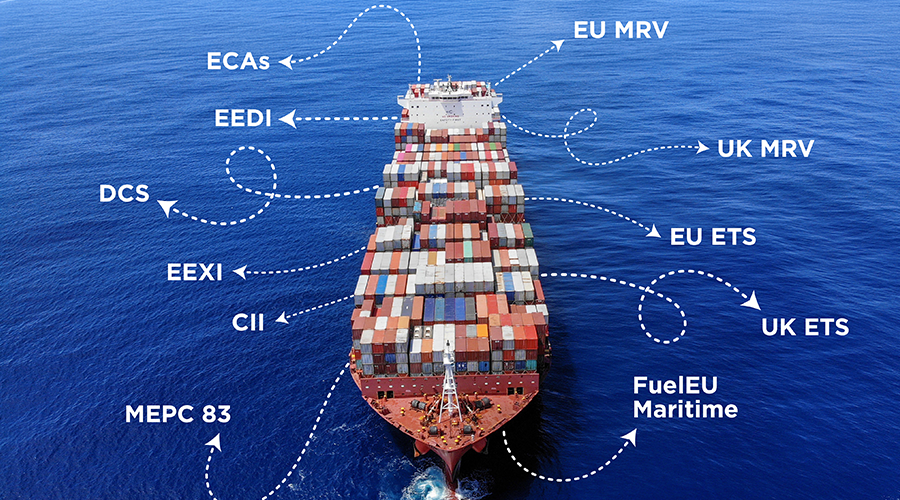From 2027: all eyes on the IMO Net-Zero Framework
Coming into effect in 2027, the IMO Net-Zero Framework introduces two key global measures. The core elements were agreed at the 83rd session of the IMO's Marine Environment Protection Committee (MEPC 83) in April 2025, with formal adoption expected in October 2025.
Under this framework, ships will need to comply with:
- Global fuel standard: Ships must progressively reduce their annual greenhouse gas fuel intensity (GFI)—the GHG emitted per unit of energy used.
- Global economic measure: Ships exceeding GFI limits must purchase remedial units to offset emissions. Conversely, ships using zero or near-zero GHG technologies may receive financial incentives.
“Given the highly divergent positions of over 100 participating nations, the current agreement can be considered a solid foundation,” says Anil Jacob.
Notably, the amended position on the issue of the responsible party was not reversed: by default, compliance responsibility lies with the ship itself, not the Document of Compliance holder. There is also a provision allowing upstream cost recovery from Commercial Managers, who typically order the fuel. “This turns the system into a ‘polluter pays’ framework—an important outcome for ship owners. This is positive news for both ship owners and managers,” he adds.








